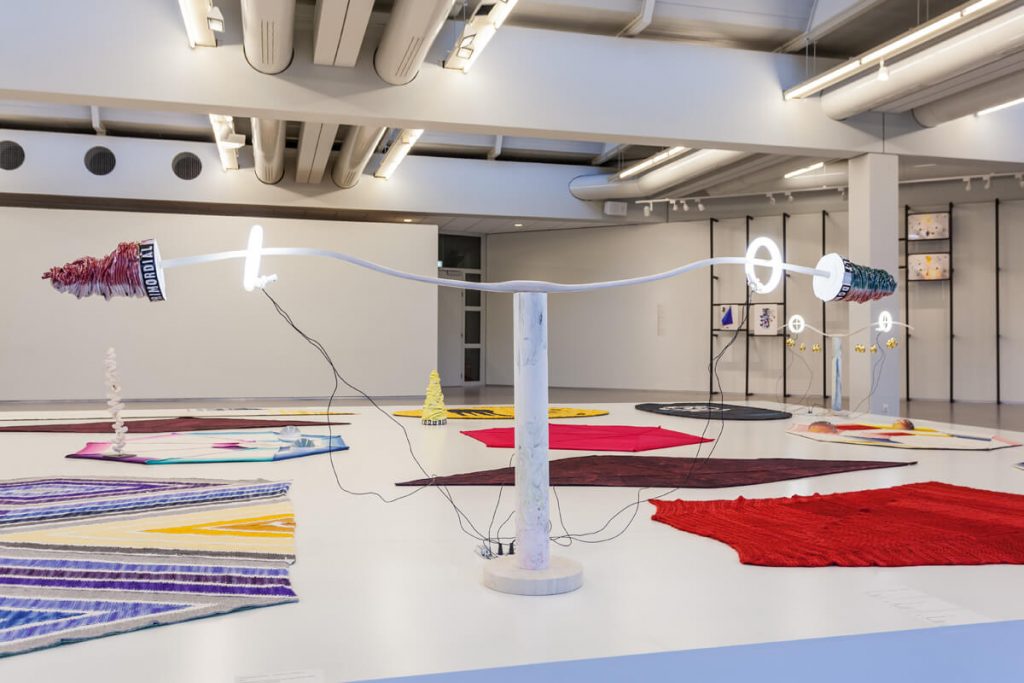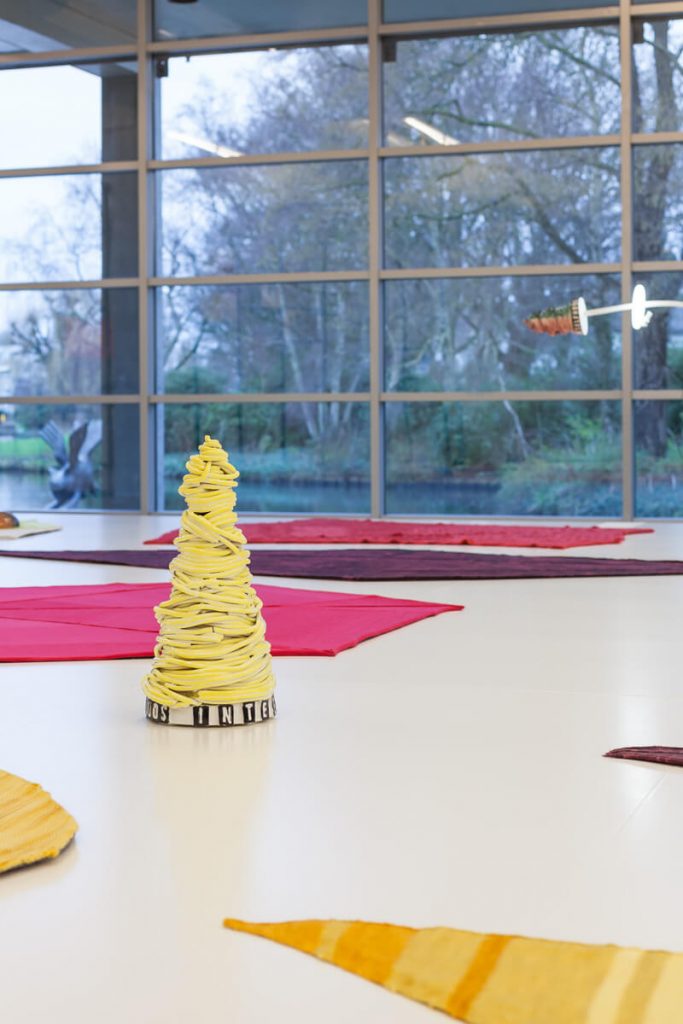Jennifer Tee has for years shown a unique multi-talent, applied with seemingly equal ease to profound choreography and to large-scale hanging sculpture. It is striking that, however coherent and layered her work is, it still remains accessible to a wide audience. The jury was unanimously in favour of awarding the 2015 Cobra Art Prize Amstelveen to the multidisciplinary artist, Jennifer Tee.” Saskia van Kampen, jury member and attached to the Museum Boijmans Van Beuningen.

The exhibition The Soul in Limbo*, part of the Cobra Art Prize Amstelveen, is the first museum retrospective of Tee’s work in the Netherlands. Based on the themes of ‘Language’, ‘Choreography’ and ‘Occult Geometry’, we look back at the developments in her work over the past 10 years and new lines are drawn towards the future of her work. Elements from previous Tee installations are incorporated in each section, including banners, ceramic vases, spheres and masks, photography, sculptures, knitted floor shapes and diagrams.
*The exhibition’s title is taken from the statement ‘I am the soul in limbo’, which is a quote from the main character Nadja in the eponymous novel by André Breton.
The exhibition The Soul in Limbo is the first museum retrospective of Jennifer Tee’s works in the Netherlands.

Jennifer Tee’s work takes very different forms, from almost-impossible-to-produce ceramics to hand-knitted rugs and from bamboo arches suspended in a fragile balance to complex performances. Collaborations with others (artists, graphic designers, choreographers) and the environment in which a work is created play important roles. This is how Tee examines in a contemporary manner the volatility and complexity of the cultures that are constantly spilling into each other. She uses Eastern philosophy in her work to try to capture, reactivate and penetrate recurring themes in Western culture and art history.
Written, spoken and sung language form a recurring aspect in a large part of Tee’s work. As such, language-based performances represent an important part of her oeuvre. Tee’s interest in written language led to a study of Egyptian hieroglyphic characters and Chinese calligraphy – both forms in which text and characters show a relationship with choreography. By extension, the performances have increasingly developed into specially designed choreographies.
